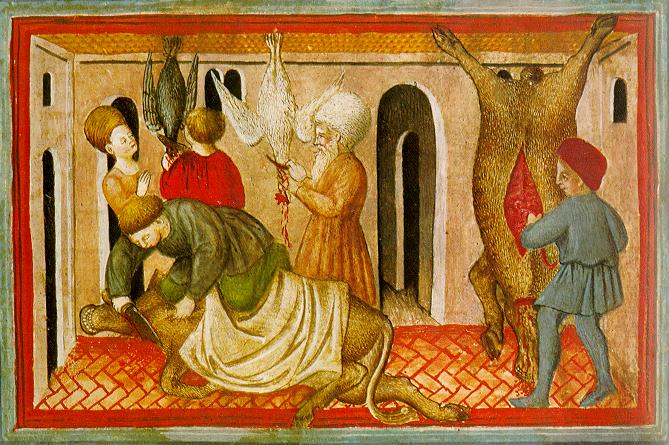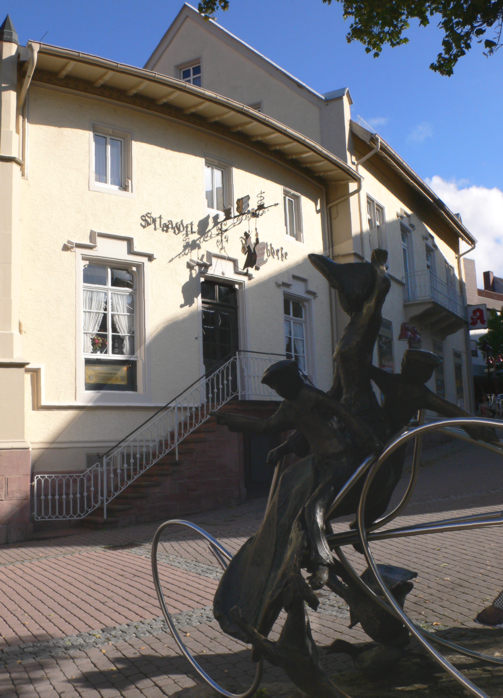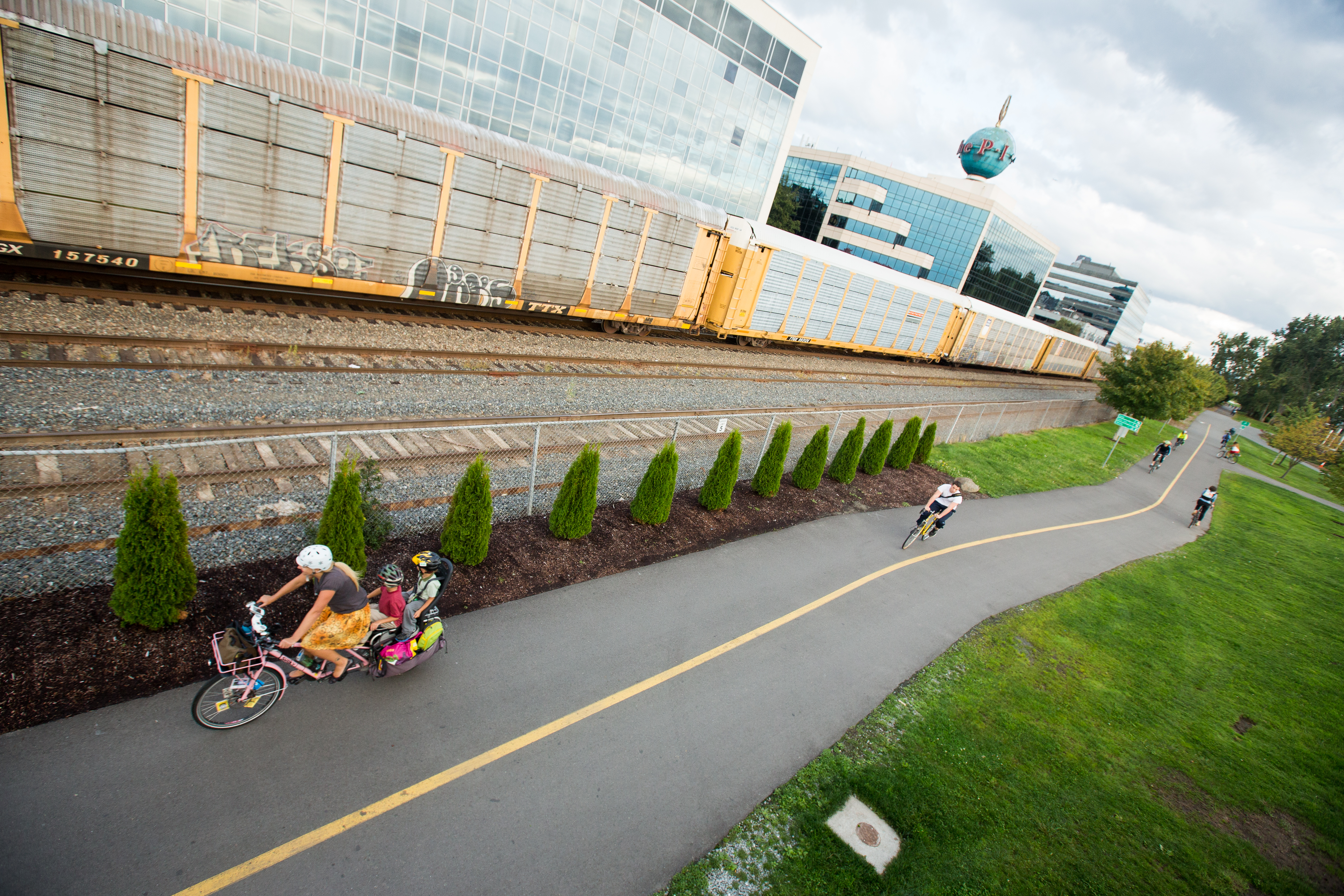|
Murder Of Ross Parker
Ross Andrew Parker (19 August 198421 September 2001), from Peterborough, England, was a seventeen-year-old white English male murdered in an unprovoked racially motivated crime. He bled to death after being stabbed, beaten with a hammer and repeatedly kicked by a gang of British Pakistani men. The incident occurred in Millfield, Peterborough, ten days after the September 11 attacks. In December 2002, Shaied Nazir, Ahmed Ali Awan and Sarfraz Ali were unanimously found guilty of Parker's murder and sentenced to life imprisonment, each receiving minimum terms ranging from 16 to 18 years. A fourth defendant, Zairaff Mahrad, was cleared of murder and manslaughter. A memorial plaque for Parker is located in the Netherton area of Peterborough where a football match is played each year in his memory. Background Ross Parker was born in Peterborough in 1984 to Davinia and Tony Parker. His mother worked as a waitress and his father ran a car bodywork repair business; he was one ... [...More Info...] [...Related Items...] OR: [Wikipedia] [Google] [Baidu] |
Peterborough
Peterborough ( ) is a City status in the United Kingdom, cathedral city in the City of Peterborough district in the Ceremonial counties of England, ceremonial county of Cambridgeshire, England. The city is north of London, on the River Nene. As of the 2021 census, Peterborough had a population of 192,178, while the population of the district was 215,673. Human settlement in the area began before the Bronze Age, as can be seen at the Flag Fen archaeological site to the east of the city centre. There is evidence of Ancient Rome, Roman occupation. The History of Anglo-Saxon England, Anglo-Saxon period saw the establishment of a monastery, Medeshamstede, which later became Peterborough Cathedral. In the 19th century, the population grew rapidly after the coming of the railway. The area became known for its brickworks and engineering. After the Second World War, industrial employment fell and growth was limited until Peterborough was designated a New towns in the United Kingdom, n ... [...More Info...] [...Related Items...] OR: [Wikipedia] [Google] [Baidu] |
Jack Hunt School
Jack Hunt School, officially Jack Hunt School Language College, is a co-educational secondary school and sixth form located in Netherton in the city of Peterborough in the United Kingdom. Students are aged 11 (Year 7) to 18 ( Year 13). Refurbishment of the premises, as part of the Peterborough Secondary School Review, increased the capacity by one form of entry in each year group, with a similar increase in the sixth form, amounting to around an extra 175 places. History The school was founded in 1969, initially admitting children aged 11-16. In 1975, the school added a sixth form. The school was officially opened by Jack Hunt, chairman of the Education Committee of the then Huntingdon and Peterborough County Council, after whom it is named. Briefly, until education in the county was reorganised in 1976, it functioned as a secondary modern school Jack Hunt School became a Beacon school in September 1999 for an initial period of three years. Following a successful application ... [...More Info...] [...Related Items...] OR: [Wikipedia] [Google] [Baidu] |
Post-mortem
An autopsy (also referred to as post-mortem examination, obduction, necropsy, or autopsia cadaverum) is a surgical procedure that consists of a thorough examination of a corpse by dissection to determine the cause, mode, and manner of death; or the exam may be performed to evaluate any disease or injury that may be present for research or educational purposes. The term ''necropsy'' is generally used for non-human animals. Autopsies are usually performed by a specialized medical doctor called a pathology, pathologist. Only a small portion of deaths require an autopsy to be performed, under certain circumstances. In most cases, a medical examiner or coroner can determine the cause of death. Purposes of performance Autopsies are performed for either legal or medical purposes. Autopsies can be performed when any of the following information is desired: * Manner of death must be determined ** Determine if death was natural or unnatural ** Injury source and extent on the corpse ... [...More Info...] [...Related Items...] OR: [Wikipedia] [Google] [Baidu] |
Exsanguination
Exsanguination is the loss of blood from the circulatory system of a vertebrate, usually leading to death. The word comes from the Latin 'sanguis', meaning blood, and the prefix 'ex-', meaning 'out of'. Exsanguination has long been used as a method of animal slaughter. Humane slaughter must ensure the animal is rendered insensible to pain, whether through a captive bolt or other process, prior to the bloodletting. Depending upon the health of the individual, a person usually dies from losing half to two-thirds of their blood; a loss of roughly one-third of the blood volume is Critical condition, considered very serious. Even a single deep cut can warrant Surgical suture, suturing and Inpatient care, hospitalization, especially if Trauma (medicine), trauma, a vein or artery, or another comorbidity is involved. In the past, bloodletting was a common medical procedure or therapy, now rarely used in medicine. Slaughtering of animals Exsanguination is used as a Animal slaughter, s ... [...More Info...] [...Related Items...] OR: [Wikipedia] [Google] [Baidu] |
Petrol Station
A filling station (also known as a gas station [] or petrol station []) is a facility that sells fuel and engine lubricants for motor vehicles. The most common fuels sold are gasoline (or petrol) and diesel fuel. Fuel dispensers are used to pump gasoline, diesel, compressed natural gas, compressed hydrogen, hydrogen compressed natural gas, liquefied petroleum gas, liquid hydrogen, kerosene, alcohol fuels (like methanol, ethanol, butanol, and propanol), biofuels (like straight vegetable oil and biodiesel), or other types of fuel into the tanks within vehicles and calculate the financial cost of the fuel transferred to the vehicle. Besides gasoline pumps, one other significant device which is also found in filling stations and can refuel certain (compressed-air) vehicles is an air compressor, although generally these are just used to inflate car tires. Many filling stations provide convenience stores, which may sell convenience food, beverages, tobacco products, lott ... [...More Info...] [...Related Items...] OR: [Wikipedia] [Google] [Baidu] |
Panel Beater
Panel beater or panelbeater is a term used in some Commonwealth countries to describe a person who restores vehicle bodies back to their factory state after having been damaged (e.g., after being involved in a collision). In the United States and Canada, the same job is done by an auto body technician or sheet metal worker. Description Panel beaters repair body work using skills such as planishing and metalworking techniques, welding, use of putty fillers, and other skills. Accident repair may require the panel beater to repair or replace parts of a vehicle. These parts may be made from various metals including steels and alloys, many different plastics, fibreglass and others. The common panel beater will work on everyday vehicles, cars, vans or 4WDs. Specialised areas include repairs to motorcycles, trucks and even aircraft. Some panel beaters also work exclusively on vehicle restorations, and do not repair smash work at all. Others may specialise in body customisation such a ... [...More Info...] [...Related Items...] OR: [Wikipedia] [Google] [Baidu] |
Hunting Knife
A hunting knife is a knife used during hunting for preparing the game to be used as food: skinning the animal and cutting up the meat. It is different from the hunting dagger which was traditionally used to kill wild game. Some hunting knives are adapted for other uses in the Wilderness, wild, such as a camp knife, which hunters may use as machetes or hatchets when those specific tools are not available. In this case, their function is similar to a survival knife. Design Hunting knives are traditionally designed for cutting rather than stabbing, and usually have a single sharpened edge. The blade is slightly curved on most models, and some hunting knives may have a blade that has both a curved portion for skinning, and a straight portion for cutting slices of meat. Some blades incorporate a gut hook. Most hunting knives designed as "skinners" have a rounded point as to not damage the skin as it is being removed. Types of knife * Fixed-Blade Knife – Fixed-blade knives ha ... [...More Info...] [...Related Items...] OR: [Wikipedia] [Google] [Baidu] |
CS Gas
The compound 2-chlorobenzalmalononitrile (also called ''o''-chlorobenzylidene malononitrile; chemical formula: C10H5ClN2), a cyanocarbon, is the defining component of the lachrymatory agent commonly referred to as CS gas, a tear gas which is used as a riot control agent, and is banned for use in warfare due to the 1925 Geneva Protocol. Exposure causes a burning sensation and tearing of the eyes to the extent that the subject cannot keep their eyes open, and a burning irritation of the mucous membranes of the nose, mouth and throat, resulting in profuse coughing, nasal mucus discharge, disorientation, and difficulty breathing, partially incapacitating the subject. CS gas is an aerosol of a volatile solvent (a substance that dissolves other active substances and that easily evaporates) and 2-chlorobenzalmalononitrile, which is a solid compound at room temperature. CS gas is generally accepted as being non-lethal. History CS gas was first synthesized by two Americans, B ... [...More Info...] [...Related Items...] OR: [Wikipedia] [Google] [Baidu] |
Balaclava (clothing)
A balaclava, also called a ski mask, is a form of cloth headgear designed to expose only part of the face, usually the eyes and mouth. Depending on style and how it is worn, only the eyes, mouth and nose, or just the front of the face are unprotected. Versions with enough of a full face opening may be rolled into a hat to cover the Crown (anatomy), crown of the head or folded down as a collar around the neck. It is commonly used in alpine skiing and snowboarding. History Similar styles of headgear were known in the 19th century as the ''Uhlan cap'' worn by Polish and Prussian soldiers, and the ''Knit cap, Templar cap'' worn by outdoor sports enthusiasts. The name comes from their use at the 1854 Battle of Balaclava during the Crimean War, referring to the town of Balaklava near Sevastopol in Crimea, where British troops there wore knitted headgear to keep warm. Handmade balaclavas were sent over to the British Army, British troops to help protect them from the bitter cold weath ... [...More Info...] [...Related Items...] OR: [Wikipedia] [Google] [Baidu] |
Cycle Path
A bike path or a cycle path is a bikeway separated from motorized traffic and dedicated to cycling or shared with pedestrians or other non-motorized users. In the US a bike path sometimes encompasses ''shared use paths'', "multi-use path", or "Class III bikeway" is a paved path that has been designated for use by cyclists outside the right of way of a public road. It may or may not have a center divider or stripe to prevent head-on collisions. In the UK, a ''shared-use footway'' or ''multi-use path'' is for use by both cyclists and pedestrians. Bike paths with independent rights-of-way Bike paths that follow independent rights-of-way are often used to promote recreational cycling. In Northern European countries, cycling tourism represents a significant proportion of overall tourist activity. Extensive interurban bike path networks can be found in countries such as Cycling in Denmark, Denmark or Cycling in the Netherlands, the Netherlands, which has had a national system of cycle ... [...More Info...] [...Related Items...] OR: [Wikipedia] [Google] [Baidu] |
Public House
A pub (short for public house) is in several countries a drinking establishment licensed to serve alcoholic drinks for consumption Licensing laws of the United Kingdom#On-licence, on the premises. The term first appeared in England in the late 17th century, to differentiate private houses from those open to the public as alehouses, taverns and inns. Today, there is no strict definition, but the Campaign for Real Ale (CAMRA) states a pub has four characteristics: # is open to the public without membership or residency # serves draught beer or cider without requiring food be consumed # has at least one indoor area not laid out for meals # allows drinks to be bought at a bar (i.e., not only table service) The history of pubs can be traced to taverns in Roman Britain, and through Anglo-Saxon alehouses, but it was not until the early 19th century that pubs, as they are today, first began to appear. The model also became popular in countries and regions of British influence, whe ... [...More Info...] [...Related Items...] OR: [Wikipedia] [Google] [Baidu] |








